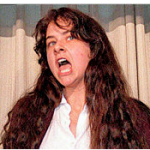Just after Christmas, the New York Times contacted me to contribute a brief argument on whether I thought Lori Berenson, the American convicted of terrorism in Peru, should return to that country to complete her parole, after spending this holiday with her family in New York (my view is that the US and Peru should work out an arrangement to allow her to serve the remainder of her parole in the United States).
Berenson was never directly tied to any act of violence. By her own admission, she collaborated with an avowed terrorist group (which as a number of commenters noted killed many hundreds of people, something I neither covered up nor minimized in any way). At the time, Peru’s justice system was deeply flawed and abusive; I wrote about this as a Human Rights Watch researcher in The Two Faces of Justice, documenting how hundreds of people were convicted on slim to no evidence, unable to mount a defense and sentenced to 20 years or more in prison with little chance for appeal.
Many, among them Berenson, did time in Yanamayo Prison, at 13,000 feet one of the most brutal and inhumane detention facilities in the world. As the New York Times reported in 1996:
Inmates in Yanamayo, not far from Lake Titicaca, about 525 miles southeast of Lima, are confined to small cells with no running water, no lighting and no glass in the windows to stop the frigid mountain winds. Temperatures drop as low as zero during the winter, but the altitude makes it cold much of the year. ”I don’t know how a human being can survive under those conditions,” Mrs. Berenson [Lori’s mother] said. ”It’s like having the flu and living in a freezer at the same time.'” Because of the altitude and cold, Ms. Berenson’s parents said, their daughter suffers from dizzy spells and circulation problems that result in cuts, swelling and discoloration of her fingers. Because of the altitude, she cannot digest certain foods, mainly legumes, the main source of protein in the prison, they said, and she has a chronic sore throat and laryngitis. Prisoners in Yanamayo receive about a gallon of water each day that is used for drinking, washing and flushing a hole in the concrete floor that serves as a toilet. The beds are concrete, and prisoners are allowed only a half-hour of yard time a day. They are confined to their cells the rest of the day. Mr. Berenson [Lori’s father] said the prison, which largely houses prisoners convicted of terrorism, was designed to bring about a slow death.
Certainly, Berenson should be punished for breaking Peru’s law. But the punishment should fit the crime. I think it is valid to take into account the kinds of courts that tried her and the disproportionate sentence given to a person who had, as I noted, tangential relation to Peru’s decades-long political violence. In part, Berenson became a scapegoat, vilified because she was seen as a foreign meddler and came off as a “crazed” woman (see photo above), becoming a target for the fears of so many Peruvians about the much more ferocious and bloody Shining Path. I wrote about the women of the Shining Path in my 1987 book, The Monkey’s Paw: New Chronicles from Peru.
Yes, she got special treatment — both ways, as it turns out, both punished more (20 years for very little) and less (receiving permission to travel to the US for the first time this December). Justice is about punishment, but it’s also a question of mercy — enough time and enough suffering
Related articles
- Lori Berenson arrives in U.S. after 16 years (news.blogs.cnn.com)
- Should Lori Berenson Go Back to Peru? (nytimes.com)


